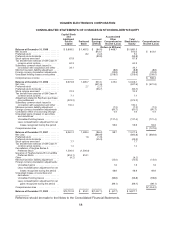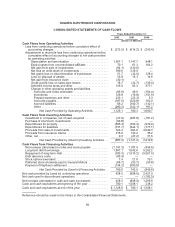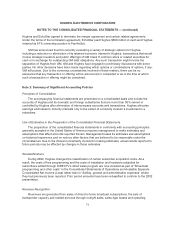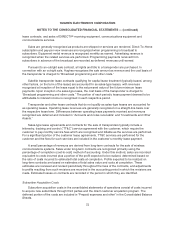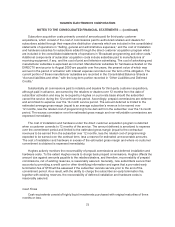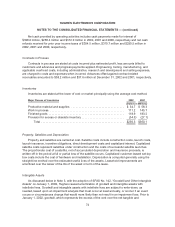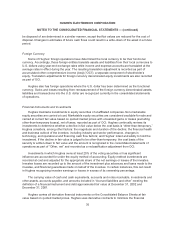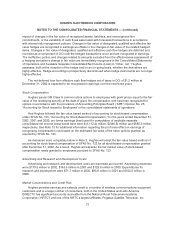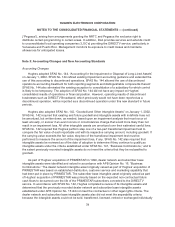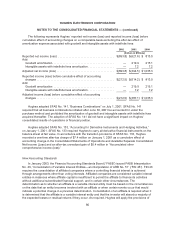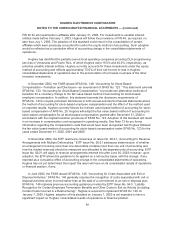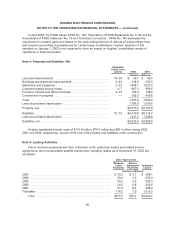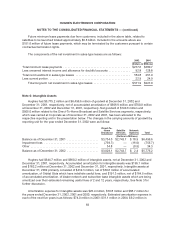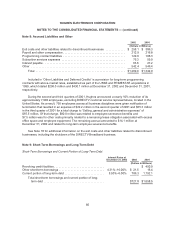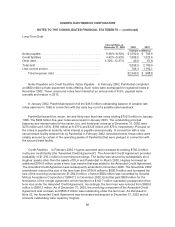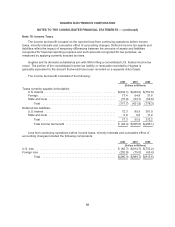DIRECTV 2002 Annual Report Download - page 88
Download and view the complete annual report
Please find page 88 of the 2002 DIRECTV annual report below. You can navigate through the pages in the report by either clicking on the pages listed below, or by using the keyword search tool below to find specific information within the annual report.HUGHES ELECTRONICS CORPORATION
NOTES TO THE CONSOLIDATED FINANCIAL STATEMENTS — (continued)
(“Pegasus”), arising from arrangements granting the NRTC and Pegasus the exclusive right to
distribute certain programming in certain areas. In addition, DLA provides services and extends credit
to unconsolidated local operating companies (“LOC’s) providing the DIRECTV service, particularly in
Venezuela and Puerto Rico. Management monitors its exposure to credit losses and maintains
allowances for anticipated losses.
Note 3: Accounting Changes and New Accounting Standards
Accounting Changes
Hughes adopted SFAS No. 144, “Accounting for the Impairment or Disposal of Long-Lived Assets”
on January 1, 2002. SFAS No. 144 refined existing impairment accounting guidance and extended the
use of this accounting to discontinued operations. SFAS No. 144 allowed the use of discontinued
operations accounting treatment for both reporting segments and distinguishable components thereof.
SFAS No. 144 also eliminated the existing exception to consolidation of a subsidiary for which control
is likely to be temporary. The adoption of SFAS No. 144 did not have any impact on Hughes’
consolidated results of operations or financial position. However, operating results of discontinued
businesses such as DIRECTV Broadband, which previously would not have been reported as a
discontinued operation, will be reported as a discontinued operation under this new standard in future
periods.
Hughes also adopted SFAS No. 142, “Goodwill and Other Intangible Assets” on January 1, 2002.
SFAS No. 142 required that existing and future goodwill and intangible assets with indefinite lives not
be amortized, but written-down, as needed, based upon an impairment analysis that must occur at
least annually, or sooner if an event occurs or circumstances change that would more likely than not
result in an impairment loss. All other intangible assets are amortized over their estimated useful lives.
SFAS No. 142 required that Hughes perform step one of a two-part transitional impairment test to
compare the fair value of each reportable unit with its respective carrying amount, including goodwill. If
the carrying value exceeds the fair value, step two of the transitional impairment test must be
performed to measure the amount of the impairment loss, if any. SFAS No. 142 also required that
intangible assets be reviewed as of the date of adoption to determine if they continue to qualify as
intangible assets under the criteria established under SFAS No. 141, “Business Combinations,” and to
the extent previously recorded intangible assets do not meet the criteria that they be reclassified to
goodwill.
As part of Hughes’ acquisition of PRIMESTAR in 1999, dealer network and subscriber base
intangible assets were identified and valued in accordance with APB Opinion No. 16, “Business
Combinations.” The dealer network intangible asset originally valued as part of Hughes’ acquisition of
PRIMESTAR was based on established distribution, customer service and marketing capability that
had been put in place by PRIMESTAR. The subscriber base intangible asset originally valued as part
of Hughes’ acquisition of PRIMESTAR was primarily based on the expected non-contractual future
cash flows to be earned over the life of the PRIMESTAR subscribers converted to the DIRECTV
service. In accordance with SFAS No. 142, Hughes completed a review of its intangible assets and
determined that the previously recorded dealer network and subscriber base intangible assets
established under APB Opinion No. 16 did not meet the contractual or other legal rights criteria. The
dealer network and subscriber base intangible assets also did not meet the separability criteria
because the intangible assets could not be sold, transferred, licensed, rented or exchanged individually
78


